As part of our ongoing research updates, we continue to explore the top-scoring genes linked to lung cancer identified by the Mapping Cancer Markers (MCM) project. Following our previous focus on GCM1, this update examines DYNLT1 (Dynein Light Chain Tctex-Type 1), a gene with pivotal roles in intracellular transport and cancer pathophysiology.
Terminology
Dynein motor complex: A group of proteins responsible for transporting cellular cargo along microtubules in the cell.
Primary cilia: Sensory organelles on the cell surface that play a role in signal transduction and cell cycle regulation.
Oncogenic nucleoporins: Mutated or abnormally expressed proteins from the nuclear pore complex that drive cancer progression.
Prognostic marker: A biological feature associated with clinical outcomes, such as survival or disease progression.
Background
The MCM project focuses on identifying molecular signatures that distinguish lung cancer from healthy controls. Among the top 26 high-scoring genes, DYNLT1 stands out due to its involvement in intracellular transport mechanisms and its implications in cancer biology. This protein, a non-catalytic component of the cytoplasmic dynein motor complex, is essential for cellular processes such as mitosis, neurogenesis, and viral entry into host cells.
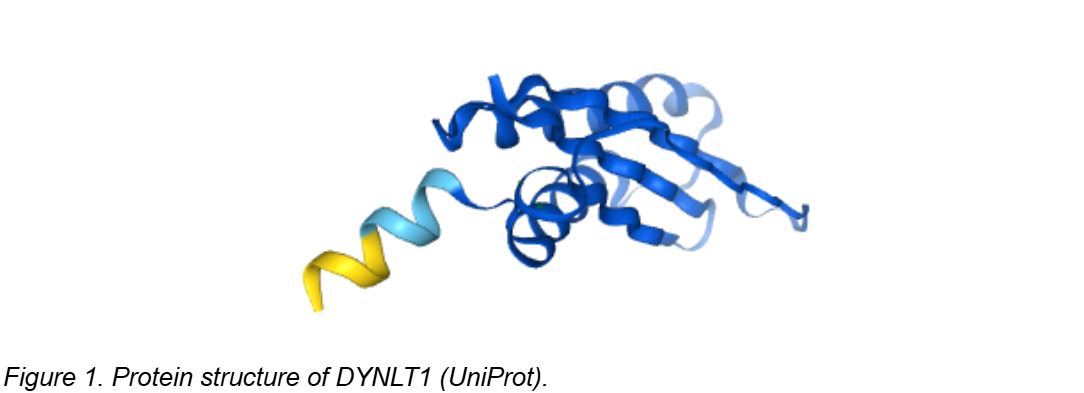
DYNLT1 also regulates the length of primary cilia, influencing critical cellular signaling pathways. Furthermore, it interacts with oncogenic nucleoporins and viral proteins, contributing to disrupted gene regulation and leukemic transformation. These multifaceted roles underscore its significance in both normal physiology and disease states.
DYNLT1 interacts with oncogenic nucleoporins, contributing to disrupted gene regulation and leukemic transformation. It also binds viral proteins, such as the human papillomavirus (HPV) minor capsid protein L2, aiding in viral nucleic acid delivery to the host nucleus.
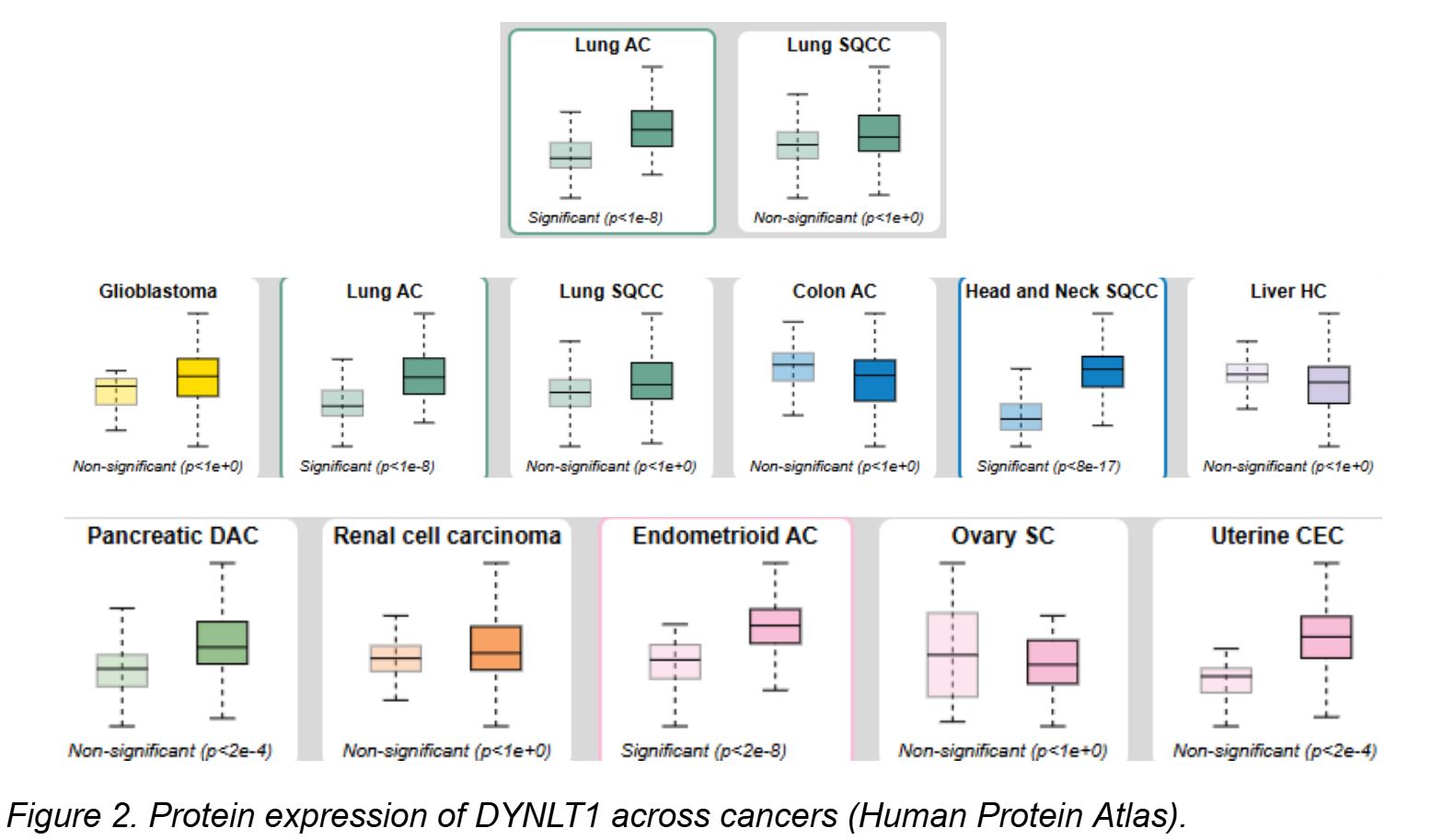
Since its discovery, DYNLT1 has been linked to various cancers and biological processes. Its expression across tissue types has been studied, revealing low tissue specificity but notable prognostic value in certain cancers.
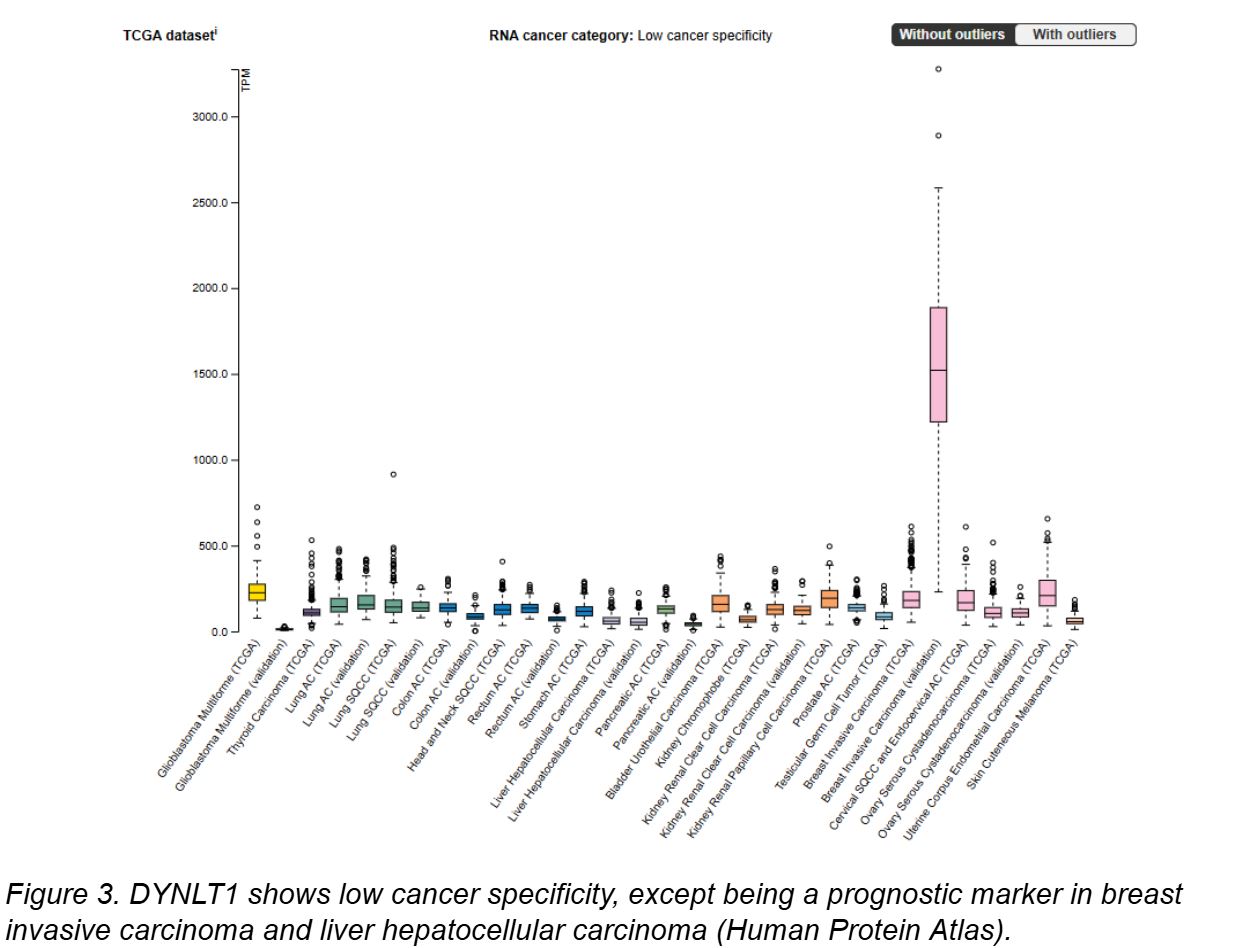
DYNLT1 Research
Role in Lung Cancer
In the context of lung cancer, DYNLT1 shows a protective role in lung adenocarcinoma (ADC) and lung squamous cell carcinoma (SQC).
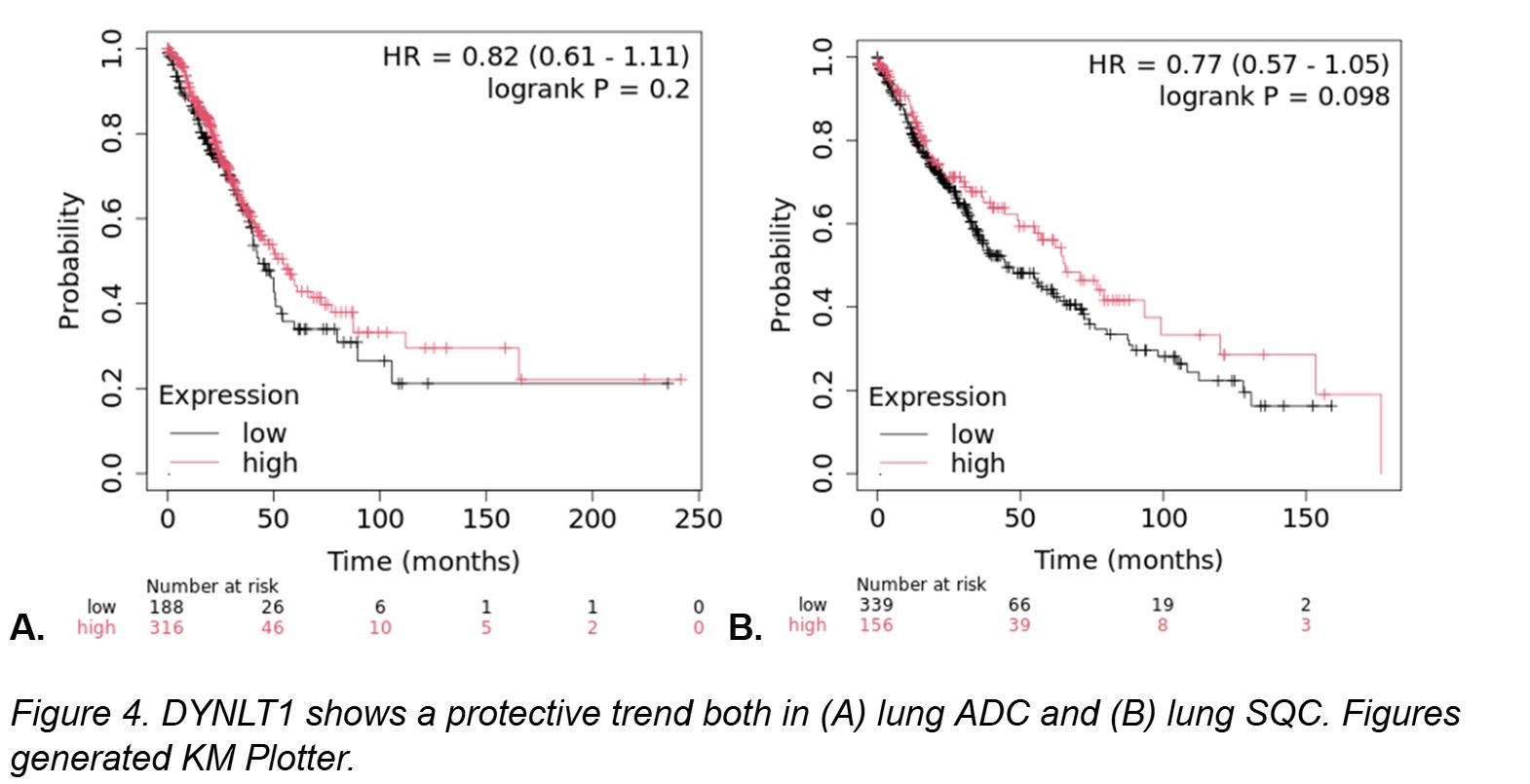
Emerging studies suggest that elevated DYNLT1 expression promotes cellular proliferation and migration, critical drivers of cancer metastasis. These findings highlight DYNLT1 as a potential diagnostic and therapeutic target for lung cancer.
Other Cancer Types
DYNLT1 plays important role in several major cancer types, and it shows both protective and negative trends on prognosis.
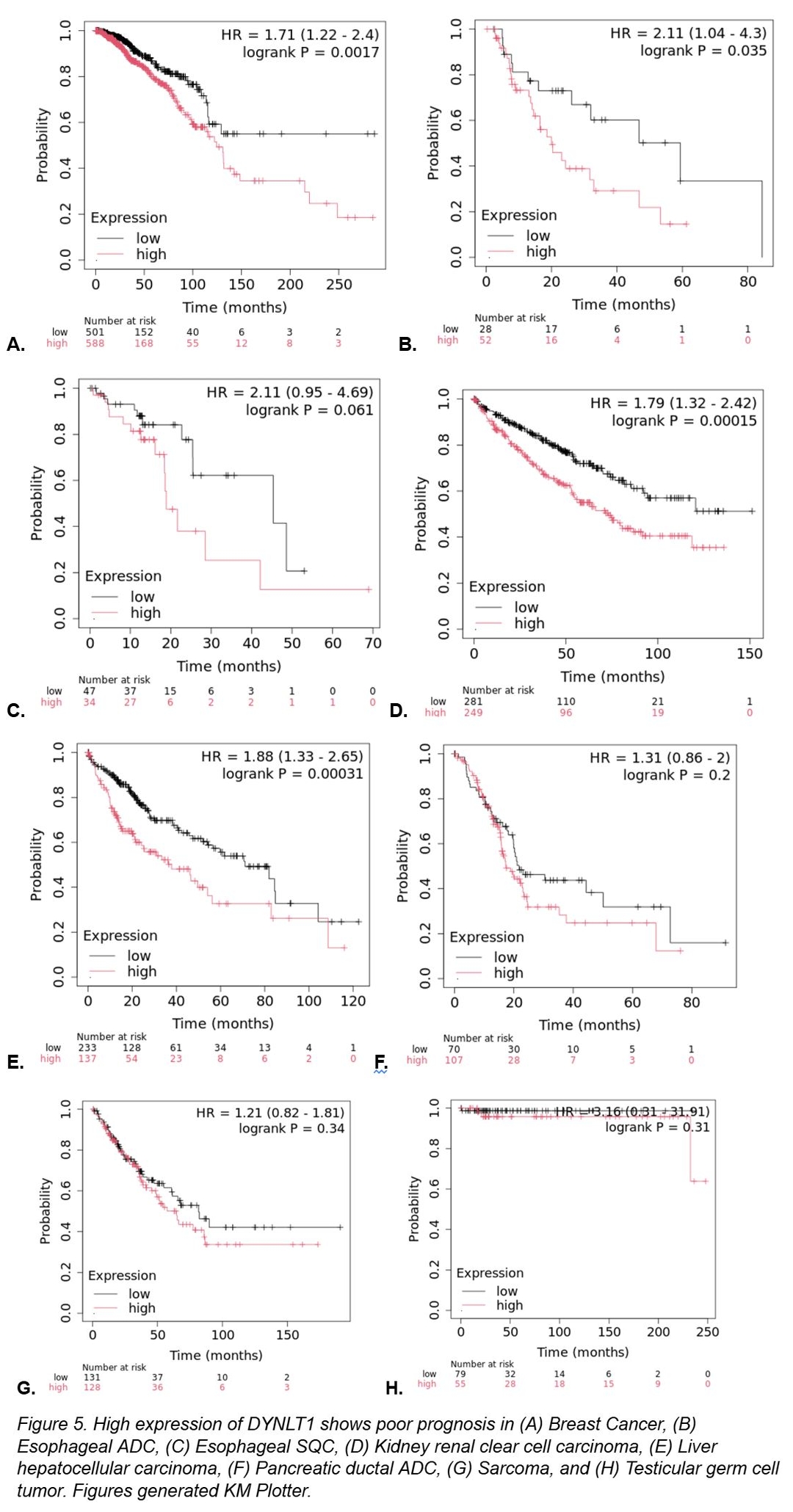
Breast Cancer: Enhancing mitochondrial metabolism by inhibiting VDAC1 ubiquitination, fueling tumor growth. It is also a diagnostic and prognostic marker linked to lipid metabolism pathways critical for cancer progression.
Glioblastoma: Contributing to tumorigenesis through interactions with signaling pathways, as demonstrated by immunohistochemical analyses of patient tissues.
Gastric Cancer: Exosomal miR-15b-3p enhances tumorigenesis via the DYNLT1/Caspase-3/Caspase-9 pathway, highlighting its role in malignant transformation.
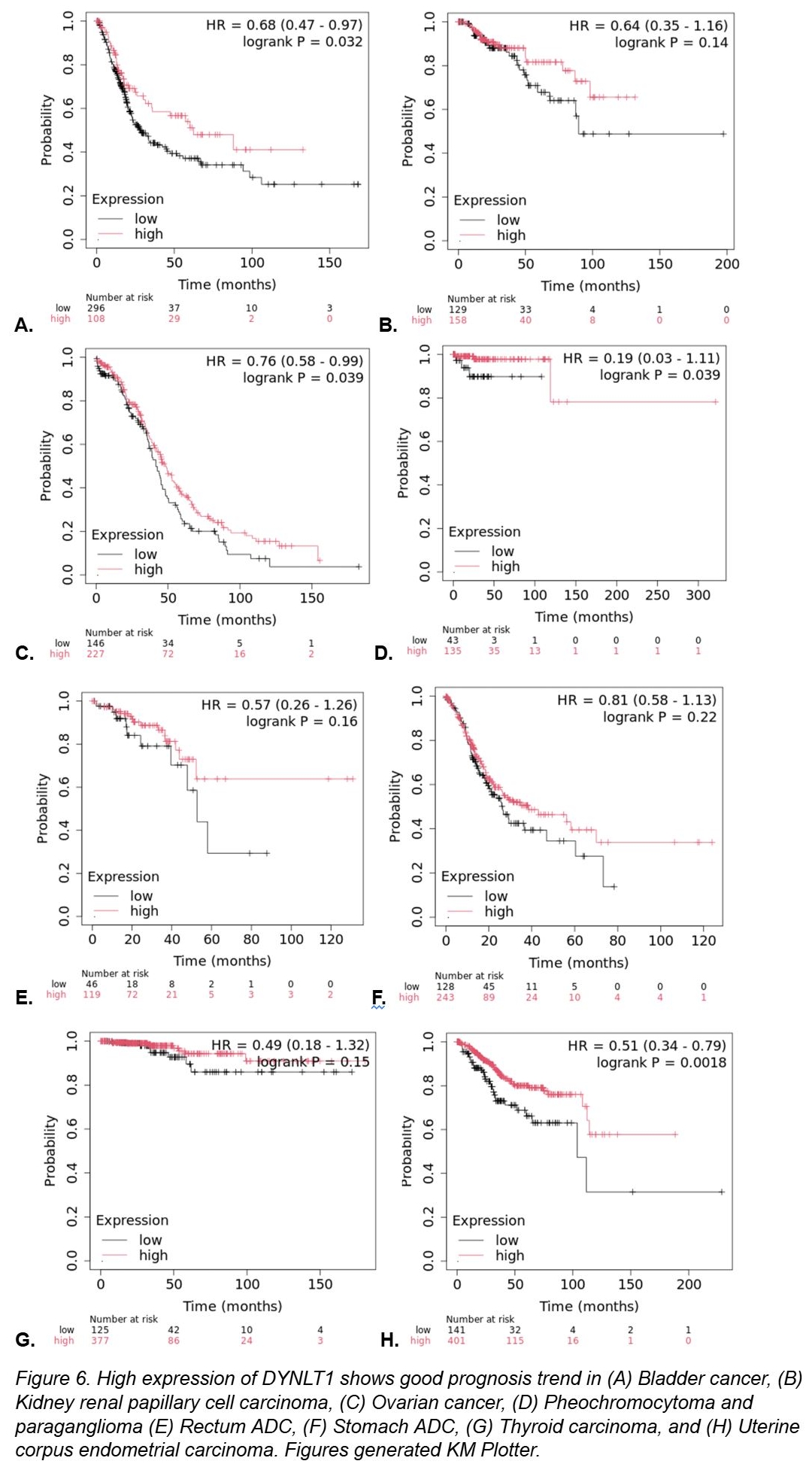
Conclusion
DYNLT1 is a key player in cancer biology, influencing cellular transport, signaling pathways, and oncogenesis. Its involvement in lung cancer—along with its broader roles in other malignancies—underscores its potential as a target for diagnostic and therapeutic development. As we delve deeper into the molecular signatures of lung cancer, DYNLT1 stands as a promising candidate for future investigations.
If you have any questions or insights about this update, feel free to share them in the thread. Thank you for supporting our research!
MCM Team